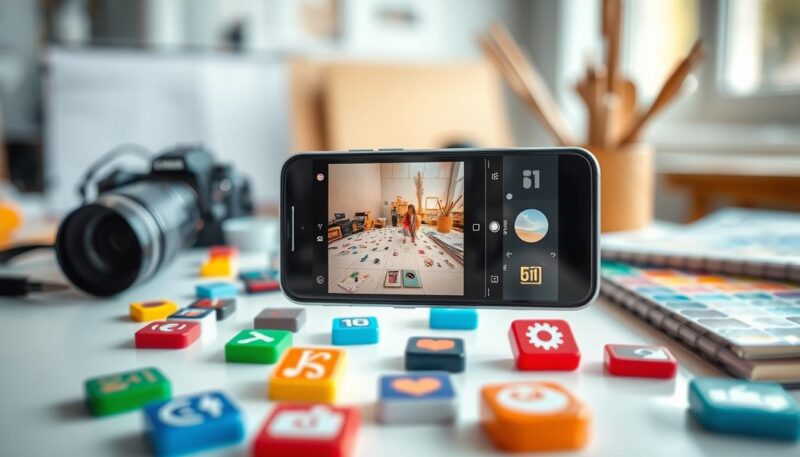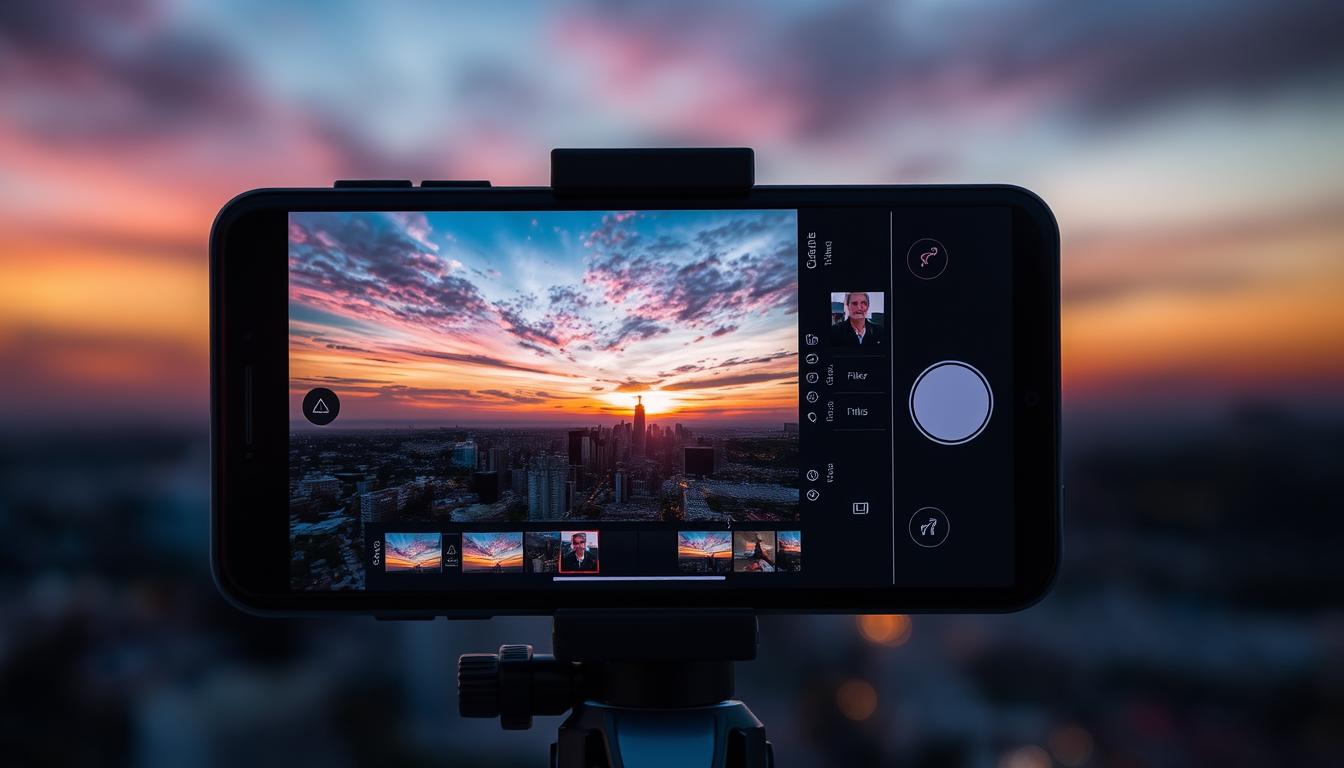These days, your smartphone is much more than just a communication device. It’s a powerful tool capable of capturing stunning photos, often rivaling traditional cameras. Whether you’re a travel enthusiast excited to document your adventures, someone interested in capturing beautiful moments in everyday life, or even an aspiring photographer, mastering mobile photography is within your reach.
With advancements in technology, the cameras on our phones have come a long way. Brands like Apple, Samsung, and Google have revolutionized the way we take pictures, adding features that once belonged only to professional photography gear. This evolution has democratized photography, allowing anyone with a smartphone to create professional-looking images right from their pocket. The journey to mastering smartphone photography, however, begins with understanding your device and learning some key mobile photography tips.
One incorrect assumption many people make is thinking that great photos come only from expensive cameras and extensive training. While those tools certainly help, the truth is that a significant part of photography is about creativity and how you use what you have. Whether you are just starting or looking to refine your skills, this article will guide you through the essentials of mobile photography, transforming you into a proficient photographer using just your phone.
In the sections to follow, you will dive into the technical settings of your phone’s camera, learn lighting techniques, and discover composition methods that can turn an ordinary shot into an extraordinary one. Not to mention, we’ll explore various apps that can enhance your images post-capture. Think about all the spontaneous moments, picturesque landscapes, and vibrant street scenes you’ve missed capturing perfectly. With these smartphone photography tips, you’ll be equipped to snap those scenes beautifully every time.
Embrace the power and convenience of your mobile device, and let’s embark on this exciting journey of mobile photography together.
Key Takeaways
- The evolution of phone cameras has transformed them into powerful photography tools.
- Great photos don’t require expensive equipment; creativity and proper technique are key.
- Understanding your phone’s camera settings is the first step in mastering mobile photography.
- Lighting and composition are crucial elements for capturing stunning images.
- Using apps can significantly enhance your photos, providing a professional finish.
Understanding Your Phone Camera Settings
Unlocking the full potential of your smartphone’s camera requires a solid understanding of its settings. Knowing how to tweak particular phone camera settings can drastically improve your image quality and introduce you to exciting photography hacks.
Resolution and Aspect Ratio
The resolution and aspect ratio of your phone camera play a significant role in determining your photo’s sharpness and composition. To adjust these settings, go to your camera app’s settings and select the desired resolution. Higher resolution offers better image quality, while the aspect ratio can alter how your images are framed.
- Resolution: Opt for the highest resolution available for optimal image quality. Lower resolution can be used to save storage space, but it may compromise the sharpness.
- Aspect Ratio: Common options include 4:3, 16:9, and 1:1. Choosing the right aspect ratio can be a game-changer for the overall composition of your photos.
Adjusting Exposure
Proper exposure ensures your images are neither too dark nor too bright. Most smartphones offer an exposure adjustment feature, accessible directly from the camera interface. Tap on the subject and use the slider to modify the exposure level until the perfect light balance is achieved. Understanding this setting is an essential part of any photographer’s toolkit, enhancing your image quality through effective light management.
White Balance and Color Correction
White balance and color correction are crucial for capturing true-to-life colors. Different lighting conditions—whether it’s natural sunlight, incandescent bulbs, or fluorescent lights—can cast color tints on your photos. Adjust the white balance settings to counteract these effects and present your images with accurate color representation. Utilize these photography hacks to produce vivid, authentic photos that truly capture the moment.
Mastering Lighting Techniques
Effective photography lighting is at the heart of all great photography. By mastering different lighting techniques, you can significantly enhance your mobile photography skills. This section focuses on how to harness natural light for better photos, introduces simple artificial lighting hacks, and explains the magic of golden hour and blue hour photography.
Using Natural Light
Natural light photography leverages the sun’s illuminating power, delivering vibrant and true-to-life images. Position yourself where the light source is behind you to avoid shadows on your subject’s face. Morning and late afternoon light often provide the softest and most flattering conditions for capturing beautiful pictures without harsh contrasts.
Artificial Lighting Hacks
When natural light is insufficient, artificial lighting can save your shot. Consider using portable LED lights or your phone’s flashlight to create the needed illumination. Adjusting the light’s intensity and direction can help reduce unwanted shadows and highlight key details in your photos. Experiment with diffusers or even a sheet of paper to soften these light sources and achieve a more natural effect.
Golden Hour and Blue Hour Photography
The golden hour and blue hour are revered by photographers for their unique aesthetic appeal. The golden hour, occurring shortly after sunrise or before sunset, casts a warm, golden glow, enriching your photos with soft, diffused light. Blue hour, the period just before sunrise or after sunset, provides a cool, bluish tone that can evoke a tranquil and ethereal mood in your images.
| Photography Lighting Conditions | Characteristics | Best Use |
|---|---|---|
| Natural Light | Soft and even with natural color balance | Portraits, landscapes, general outdoor photography |
| Artificial Light | Adjustable intensity and direction, can be harsh or soft | Indoor shoots, low-light conditions, creative effects |
| Golden Hour | Warm tones, soft shadows, golden glow | Portraits, landscapes, dramatic lighting |
| Blue Hour | Cool tones, even light, subtle shadows | Cityscapes, tranquil scenes, reflective surfaces |
Composition Techniques for Stunning Photos
Composition is key to capturing eye-catching images, and mastering several techniques can significantly elevate your creative photos. Here, we’ll explore essential methods such as the rule of thirds, leading lines, and framing and symmetry to enhance your photo composition.
Rule of Thirds
The rule of thirds is a fundamental guideline in photo composition. By dividing your frame into thirds both horizontally and vertically, you can position your subject along these lines or at their intersections. This technique creates a more balanced and engaging photo. Many mobile camera tricks incorporate this rule, making it easier for you to compose pictures that draw viewers’ attention.

Leading Lines
Leading lines guide the viewer’s eye through the photo, directing attention to key focal points. Whether it’s a road, river, or architectural element, these lines can add depth and dimension to your images. Use this technique to create dynamic and compelling compositions that stand out. Incorporating leading lines is one of the most effective mobile camera tricks to elevate your photography.
Framing and Symmetry
Creating natural frames within your photos, such as archways or trees, can add layers and context. Symmetry, on the other hand, brings a sense of harmony to your images. Together, these elements enrich your photo composition, making your scenery and subjects more striking. By practicing these methods, you can produce truly creative photos that capture the essence of your subjects perfectly.
Mobile Photography Tips and Tricks
Unlocking the full potential of your smartphone camera requires a blend of technique and creativity. Here are some advanced mobile photography techniques to elevate your artistry and produce stunning images.
Using HDR Mode
High Dynamic Range (HDR) mode is a powerful feature that helps balance the light and dark areas in your photos. By merging multiple shots taken at different exposures, HDR mode enhances details and delivers a well-lit and detailed image.
- Activate HDR mode in your camera settings.
- Hold your phone steady to avoid ghosting.
- Experiment with different lighting conditions to find the right balance.
Macro Photography with Your Phone
Macro photography allows you to capture intricate details that are often overlooked by the naked eye. Your smartphone can excel in this area with the right approach:
- Use a macro lens attachment for enhanced clarity.
- Ensure ample lighting to highlight fine details.
- Get as close to the subject as possible while maintaining focus.
Candid vs. Posed Shots
Both candid shots and posed shots have their unique charm and utility in creating compelling images that tell a story. Understanding when to use each can significantly impact the quality of your photos:
- Candid Shots: Capture genuine moments and emotions without the subject realizing. Ideal for street photography and spontaneous events.
- Posed Shots: Perfect for portraits and controlled environments. These shots allow for precise composition and lighting adjustments.
Mastering these mobile photography techniques, including the effective use of HDR mode and the art of macro photography, will elevate your skills to pro photography levels. Whether you prefer candid shots or carefully posed images, each technique can help you capture moments with exemplary detail and storytelling quality.
| Technique | Benefits |
|---|---|
| HDR Mode | Balances light and dark areas, enhances details |
| Macro Photography | Captures intricate details and close-ups with clarity |
| Candid Shots | Genuine moments and emotions |
| Posed Shots | Controlled composition and lighting |
Enhancing Photos with Apps
While much of photography is about capturing the perfect moment, post-processing can elevate your images to new heights. Camera apps have revolutionized the way we approach mobile photography editing, offering tools that allow you to enhance photos effortlessly.
Here are some popular photo-editing apps along with their standout features:

- Adobe Lightroom: Known for its robust editing tools and presets, this app allows you to adjust color, exposure, and even remove imperfections.
- Snapseed: Developed by Google, Snapseed offers a wide array of filters and tools for precise photo editing, including selective adjustments and healing brushes.
- VSCO: Famous for its stunning filters and community, VSCO helps you enhance your photos with a professional touch. Plus, you can share your creations with like-minded photographers.
Utilizing these camera apps effectively can transform your mobile photography editing experience. Here’s a quick guide on how to make the most of these tools:
- Adjust Color Balance: Play around with color settings to achieve the desired hues and tones that suit your photo’s mood and ambiance.
- Apply Filters: Filters can give your photo an instant upgrade. Experiment with different ones to see what works best for your image.
- Remove Imperfections: Use healing and cloning tools to edit out any unwanted elements or blemishes, ensuring a clean and polished final look.
| App | Key Features | User Rating |
|---|---|---|
| Adobe Lightroom | Advanced color correction, HDR, presets | 4.8 |
| Snapseed | Selective editing, healing tools, filters | 4.6 |
| VSCO | Beautiful filters, strong community, editing toolkit | 4.5 |
By leveraging these powerful camera apps, you can significantly improve your mobile photography editing skills, ensuring your photos not only capture the moment but shine with professional quality. Dive into the world of enhancing photos with these tools, and watch your images transform into works of art.
Conclusion
As you venture into the world of smartphone photography, mastering these mobile camera skills is essential. Understanding your phone’s camera settings, such as resolution, exposure, and white balance, is the first step towards shooting like a pro. By experimenting with these features, you’ll unlock the potential to capture high-quality images right from your device.
Equally important is mastering lighting techniques. Utilizing natural light, artificial lighting hacks, and timing your photos during the golden hour or blue hour can significantly enhance your images. Lighting can transform a good photo into a stunning masterpiece, and knowing how to manipulate it will elevate your smartphone photography skills.
Moreover, employing strong composition techniques, including the rule of thirds, leading lines, and framing, will help you create visually compelling shots. Combined with the additional tips and tricks such as utilizing HDR mode, exploring macro photography, and balancing candid versus posed shots, you’ll be well-equipped to take impressive photos.
In conclusion, by integrating these practices into your photography routine, you can confidently explore the creative possibilities of your mobile device. Remember, each image counts, so keep experimenting, keep learning, and let your creativity shine through your smartphone camera. Empowered with these smartphone photography tips, you’re ready to capture the world around you with a fresh, professional perspective.

